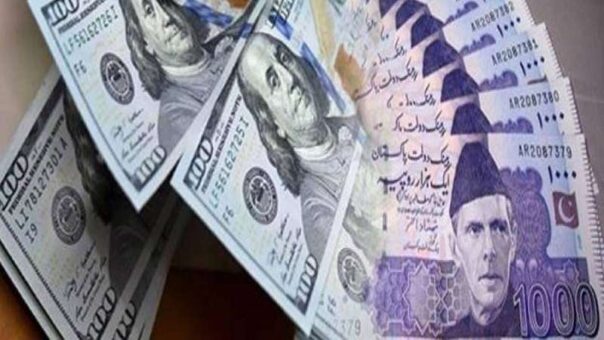Karachi, February 25, 2024 – Anticipated to remain steady, the Pakistani Rupee (PKR) is poised for stability in the upcoming week commencing February 26, 2024.
This projection is underpinned by the expected influx of dollars attributed to export receipts and remittances, effectively counteracting the pressures stemming from import payments and the forthcoming demand associated with Umrah during the holy month of Ramazan.
Throughout the current week, minimal fluctuations were observed in the interbank market. The week commenced with the rupee closing at 279.35 against the dollar on Monday, exhibiting a marginal decline to 279.59 by Tuesday. Closing the week on Friday, the local currency concluded at 279.36.
Market sources suggest that the rupee is likely to maintain a stable trajectory until the end of March and possibly beyond. However, concerns arise over potential dollar demand driven by political uncertainty and cautious hoarding among small investors.
In January, the Real Effective Exchange Rate (REER) index appreciated to 101.7, compared to the previous month’s 98.8. A brief dip in the rupee’s value occurred for two days due to the rise in REER. The International Monetary Fund (IMF)’s stance on the rupee’s appreciation, as reflected in the REER index, may play a crucial role. While the IMF’s silence may not necessarily advocate for rupee appreciation, an overvaluation may prompt calls for devaluation.
Despite initial concerns, the rupee rebounded as market participants speculated that the IMF would not mandate a steep devaluation, showing indifference as long as the REER hovers around the 100 mark.
The short-term swap rates, with an annualized mark of around 18 percent, have led to a remarkable surge in the swap market. Notably, premiums for two weeks, one, and three months stand at 185, 390, and 940 paisa respectively. This surge in premiums is attractive to exporters, allowing them to enhance profit margins by incorporating a risk-free 3-4 percent. Exporters have responded by actively engaging in forward contracts, particularly in the one and two-month tenors.
The escalating premiums indicate ample dollar liquidity in the market, with banks’ NOSTRO accounts being sufficiently funded. Forecasts indicate a forthcoming increase in remittances within the next two weeks, contributing further to improved dollar liquidity. Nevertheless, the demand for dollars is expected to rise concurrently with the anticipated demand for Umrah.
The report reflects on the rupee’s recent history, noting its drastic devaluation from $176 to $308, amounting to a 75 percent decline in just 18 months. Following the assumption of office by the caretaker government in September 2023, the rupee has shown signs of recovery and has maintained a stable range between 279 and 280 for the past 30 days.
The depreciation of the rupee during FY22–2023 resulted in a 15 percent decline in exports, with imports also experiencing a sharp decrease of nearly 28 percent. The central bank’s administrative measures, rather than the entire depreciation, were primarily responsible for the decline. Remittances, initially impacted, have nearly returned to pre-depreciation levels.
The report highlights the negative repercussions of the rupee depreciation, including financial and economic stress, panic in parallel dollar markets, and a loss of faith in the local currency. Interest rates were subsequently raised to make rupee holdings attractive. As lessons from this period are taken into account, the report emphasizes the importance of maintaining currency stability for future governments, acknowledging the IMF’s role in supporting a stable currency.
